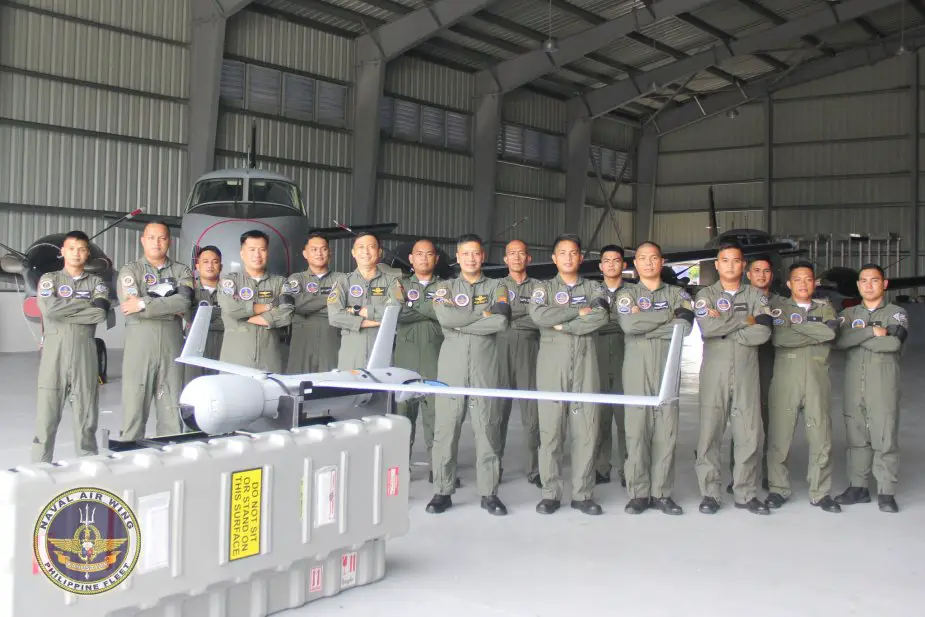Breaking news
Philippine Navy concludes their one year training of the ScanEagle UAS.
According to information published by the Philippine Navy on September 20, 2022, the Naval Air Wing (NAW) conducted a simple send-off ceremony of the ScanEagle Unmanned Aerial System (UAS) at Headquarters Naval Air Wing, Naval Base Heracleo Alano, Sangley Point, Cavite City.
Follow Navy Recognition on Google News at this link
 ScanEagle Unmanned Aircraft System at Headquarters Naval Air Wing, Philippines. (Picture source: Philippine Navy)
ScanEagle Unmanned Aircraft System at Headquarters Naval Air Wing, Philippines. (Picture source: Philippine Navy)
Said ceremony was spearheaded by CAPT JUARIO C MARAYAG PN(GSC), the Acting Commander, Naval Air Wing. This send-off ceremony marks the first deployment for the Maritime Unmanned Aerial Reconnaissance Squadron 71 (MUARS71), NAW after completing their one-year in-country training.
The “Alpha Flight” of MUARS-71 is composed of five (5) officers and nine (9) maintenance crew. This is their first deployment for this type of air asset for the Philippine Navy to conduct different missions like patrols and surveillance to secure the sovereignty of our nation.
The ScanEagle UAS was acquired by the Philippine Navy from the United States and it was formally accepted on 25 November 2020 at Magluyan Hall, Naval Base Heracleo Alano, Sangley Point, Cavite City.
About the ScanEagle Unmanned Aircraft System
The Boeing Insitu ScanEagle is a small, long-endurance, low-altitude unmanned aerial vehicle (UAV) built by Insitu, a subsidiary of Boeing, and is used for reconnaissance.
ScanEagle carries a stabilized electro-optical and/or infrared camera on a lightweight inertial stabilized turret system, and an integrated communications system having a range of over 62 miles (100 km); it has a flight endurance of over 20 hours.
ScanEagle has a 10.2-foot (3.1 m) wingspan a length of 4.5 feet (1.4 m) and a mass of 44 pounds (20 kg) and can operate up to 80 knots (92 mph; 150 km/h), with an average cruising speed of 48 knots (55 mph; 89 km/h).
Block D aircraft featured a higher-resolution camera, a custom-designed Mode C transponder and a new video system. A Block D aircraft, flying at Boeing's test range in Boardman, Oregon, set a type endurance record of 22 hours, 8 minutes.





























